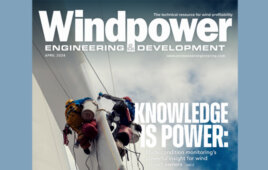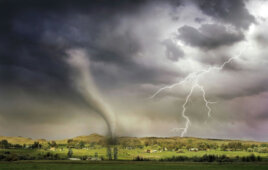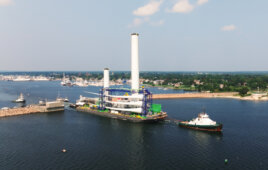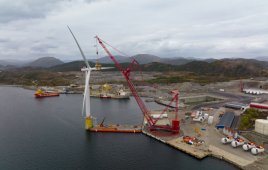Weather and asset management go hand-in-hand in the energy industry, and especially when monitoring the impact of severe weather. Flooding, high winds, snow, ice and of course lightning knocks out power delivery to thousands and cost energy companies millions in short and long-term asset repair, replacement, and upgrades.
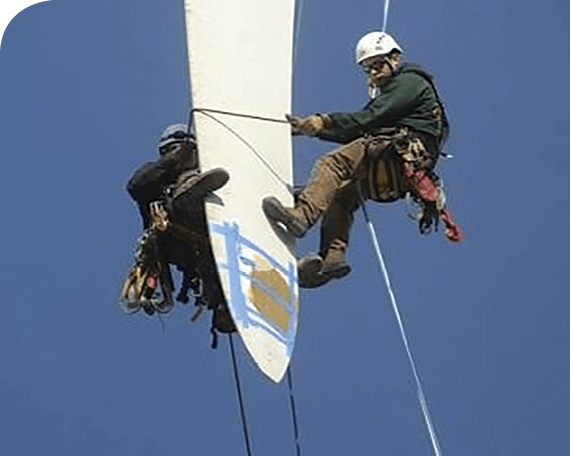
Without the assistance of a lightning strike locator, crews might spend their time unproductively inspecting turbines that likely were not hit.
As the fastest growing source of energy in the world, wind farms face many of the same weather related challenges as utilities. The harmful threat of lightning is no exception. It is the leading cause of turbine blade damage, and often the leading cause of unplanned turbine outages.
Lightning poses a particular challenge for wind-farm operators because its specific geographic impact cannot be forecast, and even when using lightning tracking software, the damage caused by a strike is often nearly invisible without close inspection.
But despite the fact that weather services for the energy industry have significantly advanced in their accuracy and even their ability to forecast weather along with anticipated damage from coming storms, wind farm operators still face the challenge after a storm of deciding whether to manually inspect every turbine in the storm’s path for lightning damage, or risk operating a damaged turbine which leads to more problems down the road.
New weather technology, however, is available to give wind farm operators more specific weather predictions, specifically analyzing the likelihood that the turbines within a designated radius were struck by lightning. This lets wind farms better assess damage following a storm and enact a more efficient inspection and repair plan, greatly alleviating the guessing game.
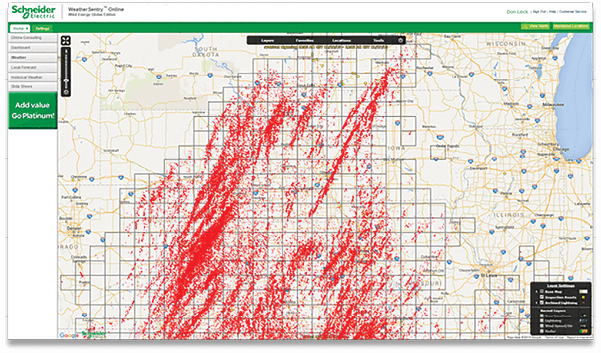
Mother nature has been busy. Each dot represents a lightning strike and location. Maps of this sort, overlaid on wind farms can guide maintenance crews to the turbine most likely hit.
The biggest challenge of lightning strikes comes from the fact that damage is often small, but when unaddressed, can grow into a much bigger problem – one that could result in spending hundreds of thousands of dollars to replace a blade.
Aside from the economic cost, lightning detection effects energy output, as well. The more time it takes to locate which blades were struck by lightning, the longer the turbine will be out of operation. This directly results in a loss of generation. Faster maintenance and repairs from more accurate damage assessments help maximize wind-farm generation output by reducing down time from inefficient maintenance.
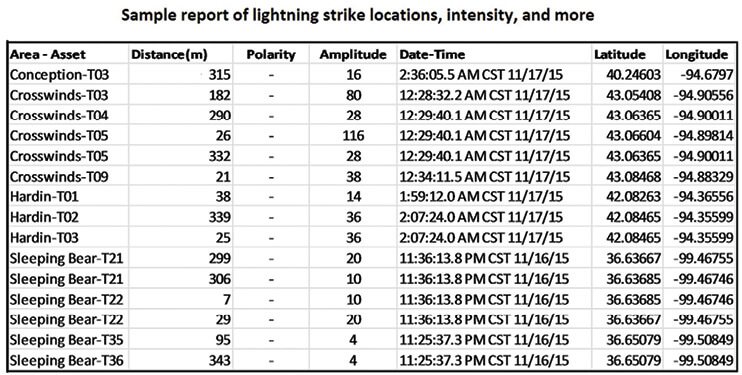 The critical development enabling such specific and granular weather-related damage assessments is the overlay of GIS-mapped assets with accurate weather data. An accurate strike assessment can be generated, down to a specific asset, by combining accurate lightning-strike data with turbine locations.
The critical development enabling such specific and granular weather-related damage assessments is the overlay of GIS-mapped assets with accurate weather data. An accurate strike assessment can be generated, down to a specific asset, by combining accurate lightning-strike data with turbine locations.
To get started, wind operators would provide a list of all wind turbines across one or more farms. A catalog is created that includes the specific geo-location of each turbine. After a storm, this catalogue can be compared to the recorded latitude-longitude of the lightning strikes, and compiled into a list.
When a strike occurs near a turbine, the system generates a report that provides operators with the exact location and how far, in meters, the lightning was from the turbine, polarity (positive or negative) of the strike, and the amplitude (a measure of electrical current or intensity) of the lightning. The accompanying table provides a report example.
Every 24 hours, the system generates a new list for operators to access. When the O&M manager starts planning the day’s maintenance schedule, that person can now prioritize which turbines to inspect first by noting the proximity of the strike, focusing effort on those turbines most likely to have been damaged.
Looking ahead
Asset-specific weather threat assessments are not only critical for wind farm operators but for the utility industry as a whole. Using the same methods as wind farm operators, utilities can work with weather system services and partners to generate after-action storm damage reports, and pre-storm threat assessments to specific assets to give outage management planners the best information to create safer, faster and more efficient response efforts.
The energy industry can now plan ahead to improve reliability and decrease costs. With increasing weather volatility and pressure on asset management budgets, this capability is critical for understanding weather’s impact on assets and how best to manage them.
Filed Under: Featured


